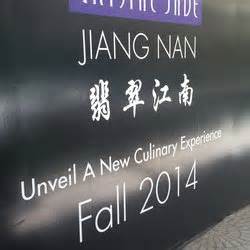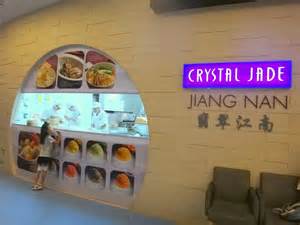
San Francisco Restaurant Industry Heating Up

At 20,000 square feet, the new Crystal Jade Jiang Nan in the Embarcadero Center is the largest restaurant lease transaction to happen in San Francisco in years.
The upscale Chinese restaurant from a Singapore-based fine-dining chain opened in November following a whopping $14 million renovation at the long-vacant spot of the former Harbor Village restaurant.
“San Francisco is a top culinary destination in the world,” said Gwyneth Borden, the executive director of the San Francisco-based trade group Golden Gate Restaurant Association. “For Crystal Jade to identify San Francisco as such is a testament to the thriving restaurant scene we have here.”
Crystal Jade’s arrival reflects the continued resurgence of the San Francisco restaurant industry since the economic downturn a few years ago. These days, the local dining scene—as with other sectors—is being buoyed by the surge in the technology arena, which has brought scores of workers, many of whom who enjoy eating out.
And these workers and everybody else have plenty to choose from as the past year alone has seen a cornucopia of new restaurant openings across town besides Crystal Jade such as The Progress in the Western Addition, Bartlett Hall in Union Square and Hapa Ramen in the Mission District. The outlook for the local restaurant industry remains strong for 2015, although staffing shortages, increasing operating costs and other concerns somewhat temper a long-lasting optimism.
Borden described 2014 as a banner year, “especially in terms of high-profile restaurants” such as Crystal Jade and The Progress, the hotly anticipated follow-up from the makers of the nationally regarded State Bird Provisions next door on Fillmore Street.

Agreeing with that assessment was Rhonda Diaz Caldewey, a San Francisco-based principal of Terranomics, a retail division of commercial brokerage firm Cassidy Turley Northern California.
“There has been a tremendous amount of restaurant activity despite the rising cost of doing business in San Francisco,” Diaz Caldewey said. “While it has kept some away, local, national and international operators signed transactions,” including the newly opened PABU in the Financial District and the forthcoming Mid-Market restaurants American Masala and Cadillac Bar & Grill.
But the biggest deal in the city in recent memory has been Crystal Jade. The sprawling, plush restaurant at Four Embarcadero Center is Crystal Jade Culinary Concepts Holding’s first foray into the United States. The company has more than 20 locations throughout Asia and signed a long-term lease for the San Francisco space owned by real estate investment trust Boston Properties, which Diaz Caldewey helped represent in the deal.
Borden attributed the recent wave of restaurant openings to the city’s world-renowned food culture coupled with its current economic boom. “Obviously, there are more people in the city,” Borden said, “and more people are dining out,” particularly the high-earning young tech workers—many of whom seek an active urban lifestyle.
The city’s surging tech-fueled office market also is a restaurant driver in another way. Diaz Caldewey pointed out that many restaurant projects are finding a home in mixed-use developments, where ground-floor space can accommodate a food operator.
The types of food places opening and cuisine being served run across the board, industry experts say. But “food emporiums are particularly hot right now as are restaurants that allow for large lounge and counter-eating space and private event rooms,” Diaz Caldewey said.
According to the city’s Commerce and Industry Inventory report released in December, San Francisco had 3,307 eating and drinking establishments in 2013, marking a 3.7 percent increase from the 3,189 the year before.
These businesses generated $3.7 billion in taxable sales revenue in 2013, up from the $3.5 billion the previous year, according to the report.
“For 2014, I expect these numbers to be even higher,” Borden said.
Not only is the tech community patronizing the city’s restaurants, she said, it is also investing in them. “Tech executives are among the restaurant investors,” she said.

Pamela Mendelsohn, a San Francisco-based senior vice president for commercial real estate services firm Colliers International, echoed that sentiment, saying: “There’s available money from investors that we haven’t seen in the past. A lot of people have disposable income and want to have ownership, be seen and have access” in the industry.
Mendelsohn also agreed that the city’s restaurants have rebounded from the recession and said more establishments are in the works for 2015. Still, the industry faces some caution signs.
“Is the local market tight? Yes, yes, yes,” Mendelsohn said. “It’s hard to find the right space. Buildings are old, and you have to look at upgrading facilities and utilities.”
Depending on the location, she said, monthly lease rates vary widely. It can be $4 per square foot in one neighborhood and $8 in another, she said.
A quick check on the online commercial real estate listing service LoopNet seems to illustrate her point. LoopNet shows a group of restaurant spaces in the Mission going from $3.38 to $5.54, while a Lombard Street location has a $2.75 rent tag.
The industry also has to contend with rising labor and other costs plus a shortage of cooks and other restaurant employees, Mendelsohn said.
Nationally, the restaurant industry is now a $683 billion business—a record mark due to “a stronger economy and historically high levels of pent-up demand among consumers,” according to the Washington, D.C.-based National Restaurant Association. But although 2014 represents the fifth consecutive year of real growth in restaurant sales, the gains remain below what would be expected during a normal post-recession period because of various challenges, including lingering consumer worries about personal finances.
California leads the nation with total restaurant sales of nearly $70 billion, according to the national trade organization.
San Francisco’s restaurant scene is poised to sizzle even more than it has already. “There have been major cultural shifts in San Francisco before,” Diaz Caldewey said, “and this era will go down in history as another substantial one. The sidewalks are crowded and on their way to becoming even more so.”
